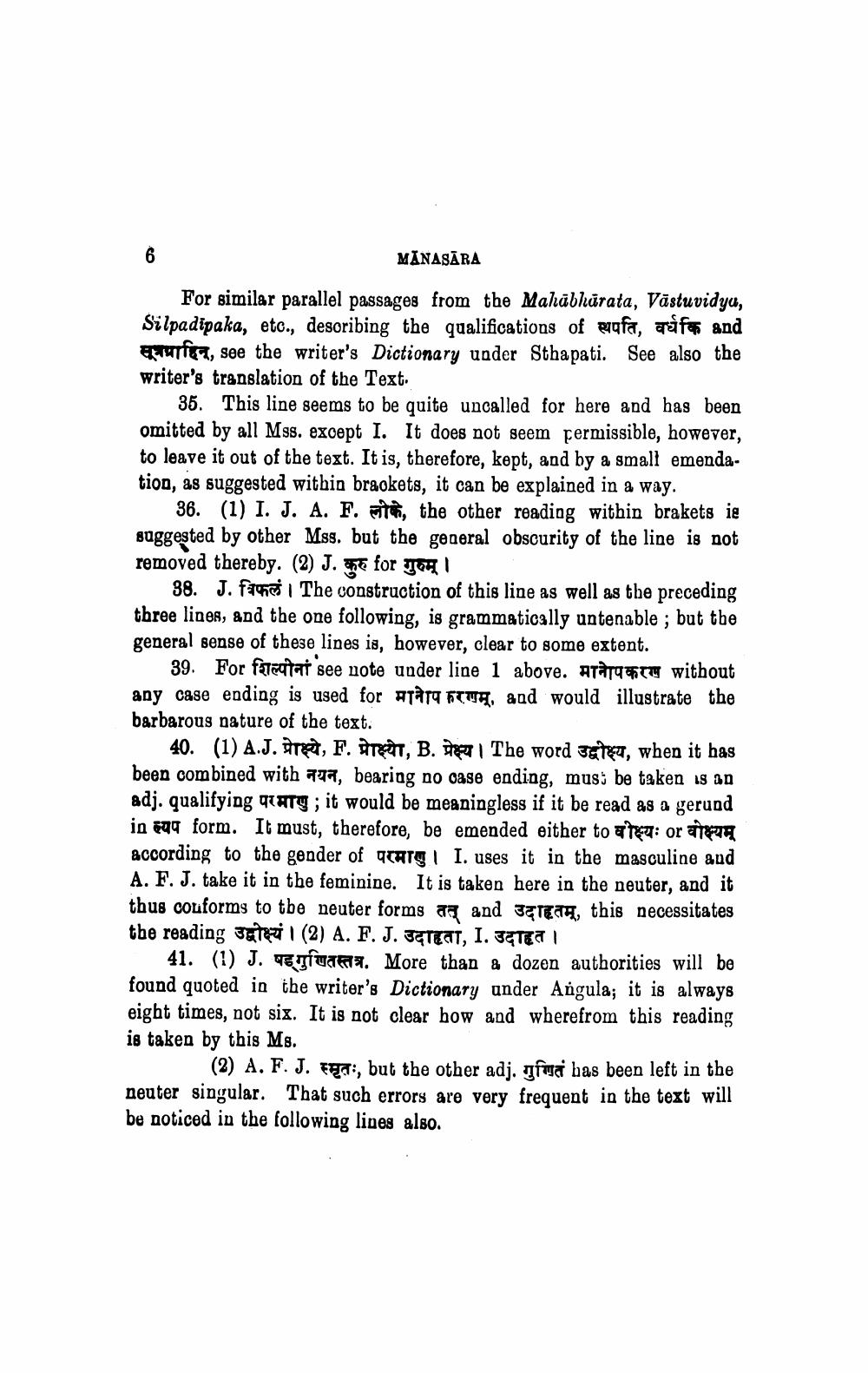________________
6
MANASARA
For similar parallel passages from the Mahabharata, Västuvidya, Silpadipaka, etc., desoribing the qualifications of स्थपति, वर्धकि and urf, see the writer's Dictionary under Sthapati. See also the writer's translation of the Text.
35. This line seems to be quite uncalled for here and has been omitted by all Mss. except I. It does not seem permissible, however, to leave it out of the text. It is, therefore, kept, and by a small emendation, as suggested within brackets, it can be explained in a way.
36. (1) I. J. A. F., the other reading within brakets is suggested by other Mss. but the general obscurity of the line is not removed thereby. (2) J. कुरु for गुरुम् ।
38. J. f The construction of this line as well as the preceding three lines, and the one following, is grammatically untenable; but the general sense of these lines is, however, clear to some extent. 39. For fatar see note under line 1 above. AT without any case ending is used for Tara, and would illustrate the barbarous nature of the text.
in
40. (1) A.J. प्रोक्ष्ये, F. प्राक्ष्यो, B. प्रेक्ष्य । The word उद्वीक्ष्य, when it has been combined with a, bearing no case ending, mus: be taken is an adj. qualifying qTg; it would be meaningless if it be read as a gerund form. It must, therefore, be emended either to a: or according to the gender of arg I. uses it in the masculine and A. F. J. take it in the feminine. It is taken here in the neuter, and it thus conforms to the neuter forms and 3, this necessitates the reading उद्घोक्ष्यं । (2) A F. J. उदाहृता, I. उदाहृत ।
41. (1) J. ega. More than a dozen authorities will be found quoted in the writer's Dictionary under Angula; it is always eight times, not six. It is not clear how and where from this reading is taken by this Ms.
(2) A F. J स्मृतः, but the other adj. गुणितं has been left in the neuter singular. That such errors are very frequent in the text will be noticed in the following lines also.




